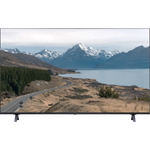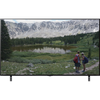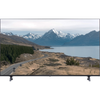A comparison of specs, key information, reviews, and best pricing from top retailers
Last updated -- hours ago | Report incorrect information
What we think

The PerfectRec TV team Learn more
Updated January 10, 2024·
The LG NANO90 is generally more expensive and offers better gaming performance, a higher refresh rate, and better picture quality in bright rooms. It also supports a wide range of HDR formats, has more HDMI ports, and more powerful speakers. Therefore, if gaming and a versatile HDR experience are priorities and you are willing to pay more, go for the NANO90. If budget is a concern and you don't need top-tier gaming capabilities, consider the UP8000. Give Feedback
this description is based on the product variant with some specs and product variant with some specs. At the time of writing, the variant with some specs cost some dollars and the variant with some specs cost some dollars.
Advantages of the LG NANO90 (LCD)
- Very good for gaming
- Good for use as monitor
- Good motion processing
- Very good reflections
Advantages of the LG UP8000 (LCD)
- Good viewing angle
Key differences
Gaming
8.0


5.7
7.6/10
RESPONSE TIME SCORE
6.7/10
8.7/10
INPUT LAG SCORE
10.0/10
7.5/10
MOTION PROCESSING
6.0/10
50.0/100
GAMING LOCAL DIMMING
0.0/100
7.6/10
GAME HDR BRIGHTNESS SCORE
6.0/10
The LG NANO90 (LCD) is very good for gaming, while the LG UP8000 (LCD) is poor.
The LG NANO90 offers a faster response time and a higher refresh rate at 120Hz, which are crucial for smooth gaming visuals, while the LG UP8000, with slower response time and a lower refresh rate at 60Hz, may not be as suitable for fast-paced gaming, even if it has slightly better input lag. The LG NANO90's performance is better suited for gaming due to these characteristics, while the LG UP8000 falls short in these areas.
Bright Room
6.9


5.9
6.3/10
VIEWING ANGLE
7.5/10
7.8/10
SDR BRIGHTNESS SCORE
6.5/10
7.2/10
HDR BRIGHTNESS SCORE
5.8/10
8.0/10
REFLECTIONS SCORE
7.0/10
The LG NANO90 (LCD) is only fair for bright room, while the LG UP8000 (LCD) is poor.
The LG NANO90 is better suited for bright rooms due to its higher reflection handling capabilities, indicated as ‘very good’ compared to the LG UP8000's 'good' performance in reflection handling. Additionally, the NANO90 provides better brightness in both standard and high dynamic range content which contributes to its fair performance in bright environments, surpassing the UP8000's capabilities which are rated as poor for HDR brightness.
Cost
$1,719


$830
$0
$500
$1,000
$1,500
$2,000
$2,500
$3,000
The LG NANO90 (LCD) has a price of $1,719 and the LG UP8000 (LCD) costs $830.

Let Us Help Find Your Perfect TV
Find your new TV
Key similarities
Picture Quality
6.1


5.7
5.28/10
CONTRAST
5.10/10
6.6/10
COLOR VOLUME SCORE
5.8/10
LED FALD
PANEL TYPE
LED
IPS
PANEL SUB-TYPE
IPS
Although they have very similar scores, PerfectRec considers LG NANO90 (LCD) to have only fair picture quality, while the LG UP8000 (LCD) has poor picture quality.
Movies & TV
5.6


5.3
5.28/10
CONTRAST
5.10/10
5.3/10
BLACK UNIFORMITY
5.5/10
7.5/10
UPSCALING
7.5/10
Yes
HDR10 SUPPORT
Yes
No
HDR10+ SUPPORT
No
Yes
DOLBY VISION SUPPORT
No
The LG NANO90 (LCD) and LG UP8000 (LCD) are both poor for movies & TV.
The LG NANO90 struggles with movies and cinematic TV partly because it has mediocre contrast and black uniformity, which are crucial for deep blacks and shadow detail, and its local dimming is also rated poorly, affecting its ability to present nuanced lighting. Compared to this, the LG UP8000 has similar limitations in contrast and lack of local dimming altogether, resulting in even less satisfactory performance for dark scenes, though it has slightly better viewing angles and colors out of the box.
Sports
6.8


6.6
7.5/10
MOTION PROCESSING
6.0/10
120Hz
REFRESH RATE
60Hz
8.7/10
INPUT LAG SCORE
10.0/10
7.5/10
UPSCALING
7.5/10
7.8/10
SDR BRIGHTNESS SCORE
6.5/10
Yes
HLG SUPPORT
Yes
The LG NANO90 (LCD) and LG UP8000 (LCD) are both only fair for sports.
The LG NANO90 provides a better response to fast-moving scenes and can handle reflections well, making it suitable for sports in various lighting conditions, but it might not be ideal for wide seating arrangements due to its viewing angles. On the other hand, the LG UP8000, while offering a wide viewing angle which is beneficial for a large audience, has a slower response time and less effective motion processing, which could result in blurry motion during fast-paced sports events.
Cartoons & Animation
5.6


5.9
6.5/10
COLOR GAMUT SCORE
5.9/10
6.6/10
COLOR VOLUME SCORE
5.8/10
7.8/10
SDR BRIGHTNESS SCORE
6.5/10
4.3/10
COLORS OUT OF THE BOX SCORE
7.1/10
5.9/10
GRAY UNIFORMITY
6.2/10
The LG UP8000 (LCD) and LG NANO90 (LCD) are both poor for cartoons & animation.
The LG NANO90 struggles with cartoons and animation primarily due to poor colors out of the box and a fair color gamut, which results in less vibrant and accurate colors. In contrast, the LG UP8000, while having good out-of-the-box colors, also suffers from a poor color gamut and color volume, leading to a limited range of colors, affecting the overall viewing experience for animated content.
News, Talk, & Other TV
6.4


6.2
7.8/10
SDR BRIGHTNESS SCORE
6.5/10
7.5/10
UPSCALING
7.5/10
The LG NANO90 (LCD) and LG UP8000 (LCD) are both only fair for news, talk, & other TV.
The LG NANO90 and LG UP8000 both perform adequately in upscaling lower resolution content and have acceptable SDR brightness suitable for watching news and TV programs. However, the LG NANO90 has local dimming and a wider color gamut that can enhance the picture quality slightly more than the LG UP8000, which lacks local dimming and scores lower in color performance.
Give feedback
We’re constantly working to improve.
How the LG NANO90 (LCD) and the LG UP8000 (LCD) compare to other TVs
Spec Comparison
| LG NANO90 (LCD) | LG UP8000 (LCD) |
GENERAL | |||
|---|---|---|---|
| Price | |||
$1,719 | $830 | ||
Brand | |||
Brand | LG | LG | |
Release Date | |||
Release Date | March 2, 2021 | July 5, 2021 | |
Full name | |||
Full name | 65NANO90 | 65UP8000 | |
Screen Size | |||
Screen Size | 65" | 65" | |
Screen Resolution | |||
Screen Resolution | 4K | 4K | |
TV FEATURES | |||
|---|---|---|---|
Operating System | |||
Operating System | webOS | webOS | |
Sound Quality Score | |||
Sound Quality Score | 6.4/10 | 6.7/10 | |
NextGen Ready | |||
NextGen Ready | No | No | |
HDMI Ports | |||
HDMI Ports | 4 | 3 | |
Coax Ports | |||
Coax Ports | 1 | 1 | |
DISPLAY QUALITY SCORES | |||
|---|---|---|---|
Picture Quality Score | |||
Picture Quality Score | 6.1/10 | 5.8/10 | |
Bright Room Score | |||
Bright Room Score | 7/10 | 6/10 | |
Gaming Score | |||
Gaming Score | 8/10 | 5.8/10 | |
Movies & TV Score | |||
Movies & TV Score | 5.6/10 | 5.4/10 | |
Sports Score | |||
Sports Score | 6.8/10 | 6.6/10 | |
PHYSICAL | |||
|---|---|---|---|
Dimensions w/o Stand (H x W x D) | |||
Dimensions w/o Stand (H x W x D) | 33" x 57.2" x 1.8" | 33" x 57.2" x 2.3" | |
Dimensions with Stand (H x W) | |||
Dimensions with Stand (H x W) | 35.6" x 57.2" | 35.4" x 57.2" | |
Weight without Stand | |||
Weight without Stand | 62.2 lbs | 47.4 lbs | |
VESA Mount | |||
VESA Mount | 400 x 400 | 300 x 300 | |
DISPLAY | |||
|---|---|---|---|
Color Depth | |||
Color Depth | 10 bit | 10 bit | |
Black Frame Insertion | |||
Black Frame Insertion | Yes | No | |
Auto Low Latency Mode | |||
Auto Low Latency Mode | Yes | Yes | |
Contrast | |||
Contrast | 5.3/10 | 5.1/10 | |
Local Dimming | |||
Local Dimming | 5.2/10 | 2.5/10 | |
SOUND | |||
|---|---|---|---|
Speaker Setup | |||
Speaker Setup | 2.2 | 2.0 | |
Speaker Power | |||
Speaker Power | 40 W | 20 W | |
Dolby Atmos | |||
Dolby Atmos | Yes | Yes | |
DTS:X | |||
DTS:X | No | No | |
Shopping
LG NANO90 (LCD)
See more
Dig into reviews and images
Techradar
John Archer | July 2021
"Here we have HDR pictures that look bright, but also manage to typically hit decently deep black levels.WebOS continues, though, to be one of the easiest to use. Connections are strong for a mid-range TV. Native 4K pictures look crisp and detailed."
LG UP8000 (LCD)
See more
Dig into reviews and images
Home Media Entertainment
Stratos Kampourogiannis | July 2021
"What we liked on this one was the very sharp 4K images it could display, its good up-scaling capabilities, nice viewing angles and extremely low input lag. Lastly the new webOS 6.0 is great even if it needs some time to get your bearings while the redesigned Magic Remote feels fresh even if functionality remains the same."
Get a great deal on the LG NANO90 (LCD) or the LG UP8000 (LCD)
About LG
LG, a prominent TV brand from Korea, has played a significant role in popularizing OLED TVs. OLED technology is hailed as the future of TV technology. Their TVs employ WebOS, a proprietary smart TV software that not only offers seamless functionality but also includes gaming-specific features, earning praise from players worldwide. Often regarded as the gateway to unparalleled viewing experiences, LG's mid-range OLEDs come highly recommended, making them a worthwhile investment for those willing to stretch their budget for superior quality.
Give feedback
We're constantly perfecting our model
TV guides you might be interested in
More comparisons for you
FAQs
FAQs about TVs
Why trust us
This information was produced and vetted by the PerfectRec TVs team. We are a product research and recommendation organization that meticulously reviews and evaluates the latest TV information and makes it digestible for you.
By the numbers
385
TVs evaluated
33,110
TVs stats compiled
21
Proprietary TVs ratings developed
122,430
Recommendations made
18,365
Consumer hours saved
About the TV team
Joe Golden, Ph.D
CEO and TVs Editor
Joe is an entrepreneur and lifelong electronics enthusiast with a Ph.D in Economics from the University of Michigan.
Jason Lew
Staff Expert & Software Engineer
Jason is a staff expert and software engineer that has been making laptop recommendations for 7 years and moderates one of the largest laptop subreddits.
Chandradeep Chowdhury
Staff Expert & Software Engineer
Chandradeep is a staff expert and software engineer and expert in televisions and monitors. He’s been making monitor recommendations for ten years.
Jaime Roldán
TVs Expert
Jaime is a Colombia-based TV expert. He is an electronics engineer with 8 years of experience in the telecom sector and has been making TV recommendations for 12 years.







